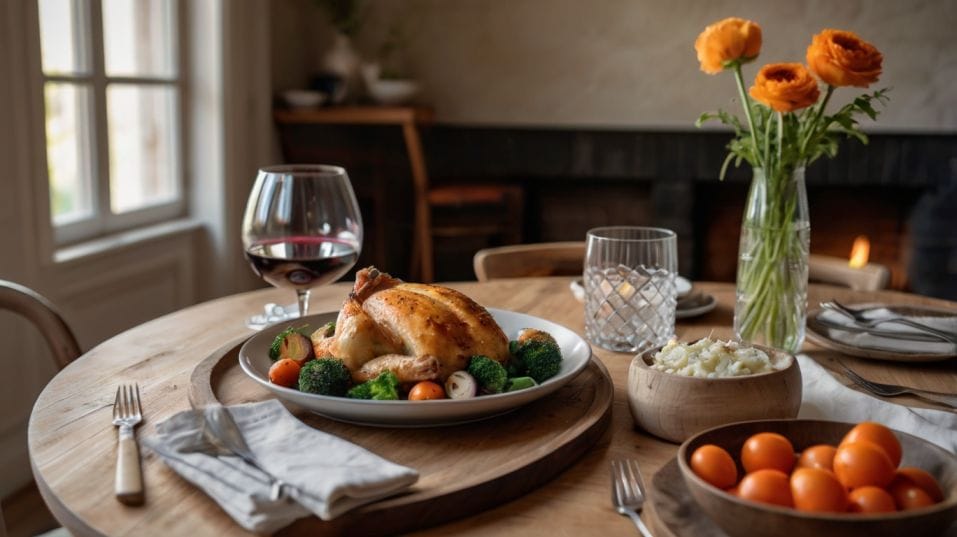Why Tempranillo Feels So Approachable
Tempranillo makes wine approachable for beginners—familiar flavors, gentle structure, and room to grow your palate with every sip.

What if one wine could help you learn, sip, and grow—without feeling out of your depth? Tempranillo does just that.
It meets new wine drinkers with warmth, not intimidation. There’s no need to decode mystery flavors or memorize obscure terms.
Just pour a glass, and the structure, flavor, and familiarity guide you forward. If you’re early in your wine journey, Tempranillo won’t just make sense—it’ll make you curious for more.
It Tastes Familiar, Even If You Don’t Know Why
Tempranillo doesn’t come on strong. It eases into the glass with gentle fruit, soft spice, and savory undertones that feel oddly recognizable—even when you’re tasting it for the first time.
Red berries, sun-dried tomato, dusty earth, sometimes a little leather or sweet tobacco if it’s aged. These aren’t exotic, hard-to-pin-down flavors. They’re everyday, even comforting.
That sense of familiarity is key when you’re building a tasting vocabulary. Because it means you’re not straining to describe what you’re drinking—you’re connecting with it.
And when a wine gives you something to hold onto, you start noticing more: how the fruit shows up early, how the finish lingers, how the texture changes as it breathes.
Tempranillo gives you room to develop a deeper palate without needing advanced knowledge. It's a teaching wine dressed like a drinking wine.

Structure That Works With You, Not Against You
One of the trickier aspects of learning wine is navigating structure—tannin, acid, body. Some grapes throw it all at you in one sip. Tempranillo builds it in layers.
It often shows medium tannins, which means your mouth registers grip, but not astringency.
The acid is bright but smooth, so it supports food without making the wine feel sharp. And the body? Balanced. Not too light to feel insubstantial, not too heavy to become fatiguing.
This kind of approachable structure is more than just pleasant—it’s practical. It trains your senses. You begin to understand how acidity lifts a wine, how tannin frames the fruit, how oak can add depth without shouting over everything else.
More importantly, you learn what you like. And that’s the real skill—discerning not just what something is, but whether it works for your taste.
It Evolves as You Do
Tempranillo wears its origin proudly, but it also adapts. Taste a young, fruit-forward bottle from central Spain and you’ll get plush berries, gentle spice, and a clean finish.
Try a reserva from Rioja, aged several years in oak and bottle, and you’ll meet a wine with layers—leather, dried fig, clove, cedar. Neither version is better. They're just different points on a spectrum.
That spectrum is part of what makes Tempranillo so educational. It gives you a window into how age changes a wine—not just in flavor, but in weight, mouthfeel, and intensity.
As you grow more confident, you’ll start noticing how that evolution mirrors your own understanding. You’ll pour a bottle, take a sip, and feel the shift from curiosity to recognition.
And then one day, you’ll swirl a glass and say something like, “This reminds me of an old-school Rioja,” and know exactly why.
Place Matters—And Tempranillo Teaches You That
Most of what makes wine exciting comes from where it’s grown. Soil, weather, elevation, winemaking philosophy—all of it shapes the final result. Tempranillo is one of those grapes that makes this easy to taste.
Regional Variations Open the Door to Understanding
In Rioja, it’s structured, elegant, and deeply rooted in tradition. In Ribera del Duero, it’s darker, more powerful, often with more muscle and depth.
In Toro, it leans wild and robust. Even in non-Spanish regions—Texas, Argentina, Australia—you can taste how the grape responds to new climates and winemaking styles.
Learning to track these differences sharpens your palate and your perspective. It also deepens your appreciation for why wine isn’t just about flavor—it’s about context.
And once you start tasting for place, you’re no longer drinking passively. You’re tasting with intention.
No Gatekeeping, No Guesswork
Here’s the other reason Tempranillo is so approachable: it’s easy to find, and it doesn’t punish your budget. You don’t need a sommelier’s budget to explore it, and you don’t need an expert’s palate to enjoy it.
That means you can try bottles across a range of styles—young, aged, oaked, unoaked—and start forming real preferences. Not just about Tempranillo, but about wine in general.
It Fits Your Life, Not the Other Way Around
And because Tempranillo is so naturally food-friendly, it fits into your life without requiring a special occasion.
Roast chicken, lentil stew, a plate of manchego and olives—Tempranillo shows up ready to work. It gives you confidence to pair wine with food intuitively, not by memorizing charts.
When a wine is this versatile, it empowers you. You stop worrying about whether you’re choosing the “right” bottle and start enjoying the one you picked.
Final Thoughts
Tempranillo earns its reputation as an approachable red not by being simple—but by being generous. It gives you something to taste, something to think about, and something to enjoy, all in one glass.
Whether you’re just starting your wine journey or refining your palate, it shows you how to taste with clarity, explore with confidence, and develop a deeper relationship with what’s in your glass.
So open a bottle tonight. Make it part of dinner. Try a version you’ve never had before. Let it teach you something new about wine—and about your own taste.
Because when a wine like Tempranillo meets you halfway, the rest of the journey feels that much more rewarding.




